Lifestyle
Moto 360: Owner’s Mag Review
Published
5 years agoon
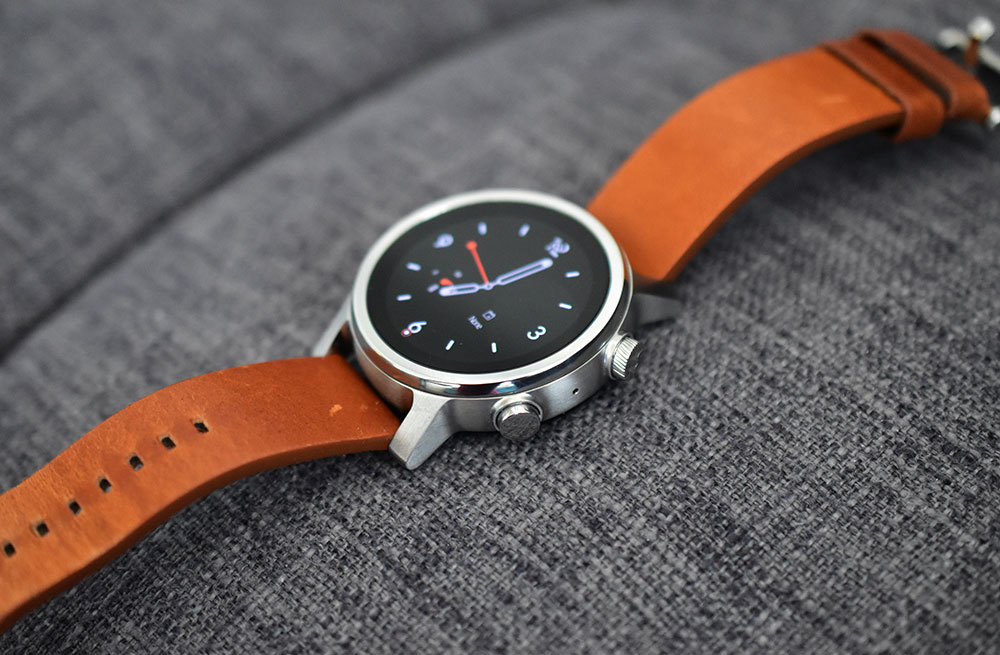
The Moto 360 is the 3rd watch to debut in series of Android smartwatches by the company. Motorola has made significant improvements to the watch’s design, battery life, and sensors have been made by eBuyNow, who licensed Moto 360 to develop, manufacture, and sell the 3rd. Gen model of the smartwatch. Standing at $299, it’s quite expensive compared to other Android smartwatches. However, unlike other products on the market that justifies the price on the spec sheet, the Moto 360’s true value comes from its more refined, polished, design that actually looks and feels like a $299 smartwatch.
Stainless Steel Design
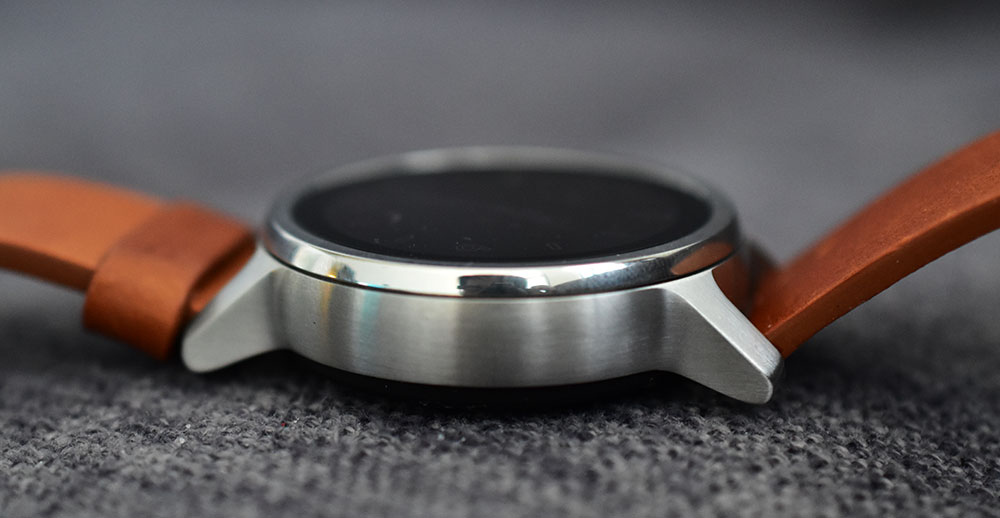
The one major thing that sets the Moto 360 apart from any other smartwatch on the market today is its design. Even if firmware stops updating, you might still wear your Moto 360 years later because it actually looks like a watch. The stainless steel design looks classy and timeless. Sized at 42.8mm wide with a thickness of 11.68mm, this is a beefy watch. However, it still looks good even on thinner wrists.
You get a few color selections to choose from. The watch comes in steel grey, rose gold, or phantom black. The outside has a layer of PVD/DLC coating to give it a bit more scratch-resistant.
First Impression
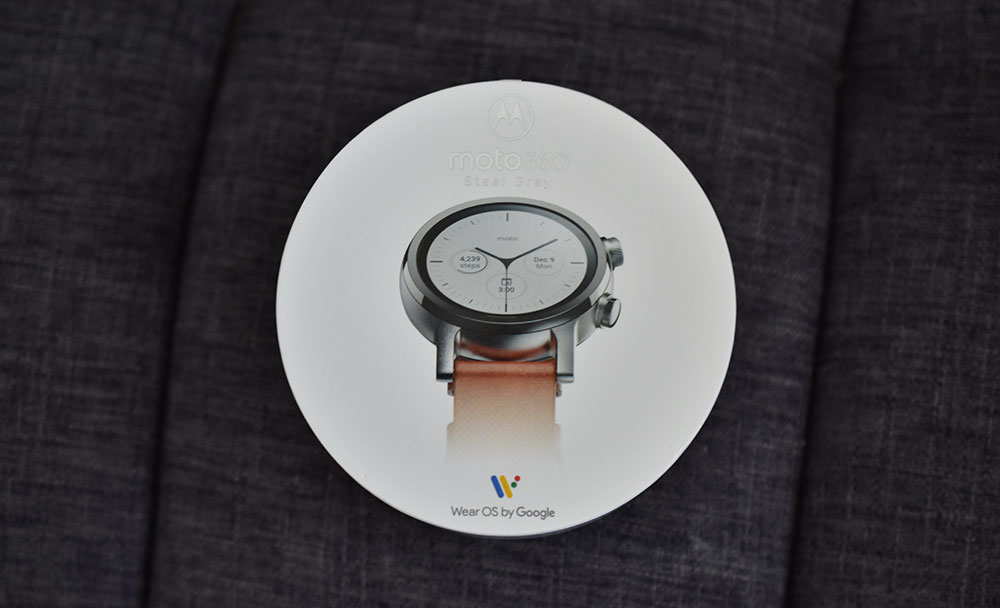
The first impression is important for a watch. And the Moto 360 looks striking at first. The always-on watch dial display mimics the look and feels of a luxury watch while perfectly disguising that it’s a smartwatch. This is a major bonus for those who want the functionality of a smartwatch, but don’t want to be labeled as a techie for wearing one.
When given the choice, the timeless elegance of a mechanical watch will always outlast smartwatches. And Motorola made a smart decision to engineer this watch to be visually more comparable to Omega than to Samsung.
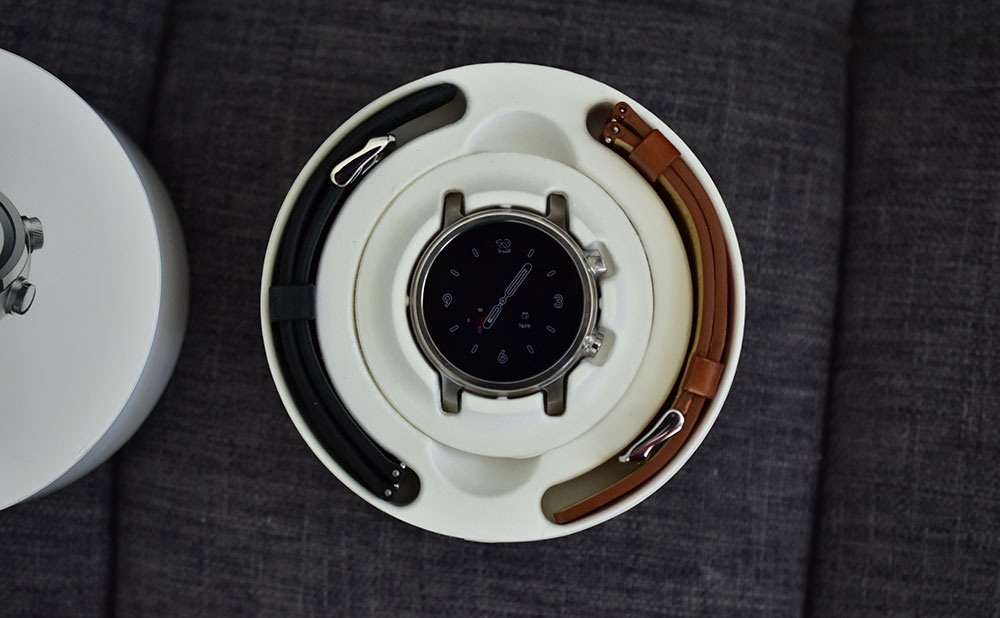
One extra thing to note. This watch comes with both a brown leather strap and a black rubber strap. This is a nice touch, saving you the time to buy extra straps for different occasions or outfits.
Performance
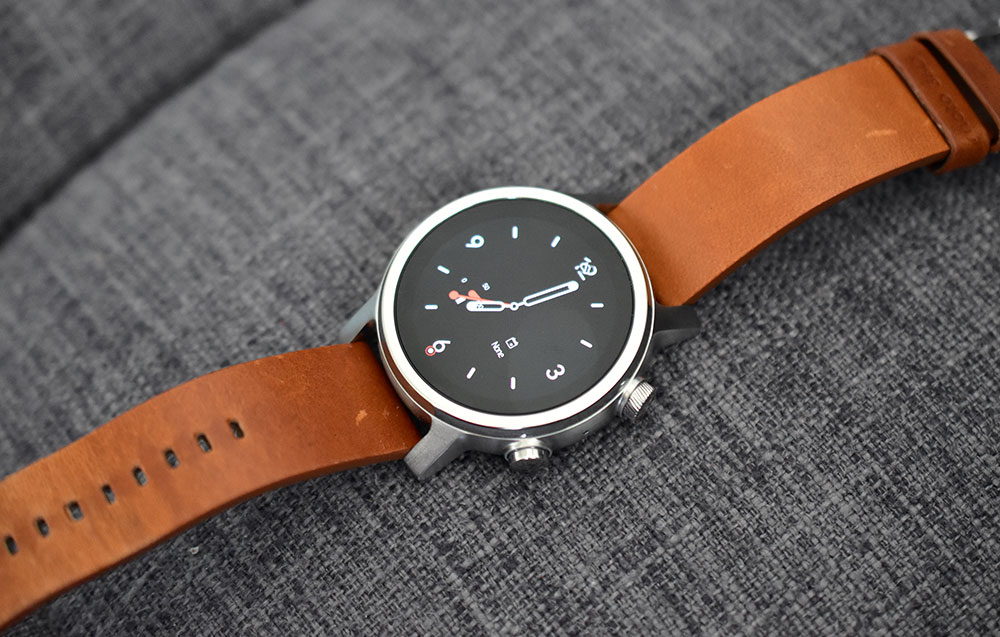
Looks aren’t everything. This is a “smart” watch after all. Powered by a Snapdragon 3100 chip, 1GB of Ram, 8GB of internal storage, and running on Watch OS, the watch is responsive and lightning fast. It feels and navigates like a Samsung Watch Active, which is a good thing.
Swipe gestures work as you’d expect just like any other smartwatches on the market. Swipe up for your notifications. Swipe left for your quick apps. And swiping down gives you the status display. Everything on the software front works exactly as you’d expect from a Watch OS experience.
And I’m glad they didn’t try to do anything gimmicky or add their own “flavor” to the user native user experience. I’ve seen other smartwatch makers attempt to do this to be “unique” the result is often a confusing interface that doesn’t add value to the overall purchase.
The Screen
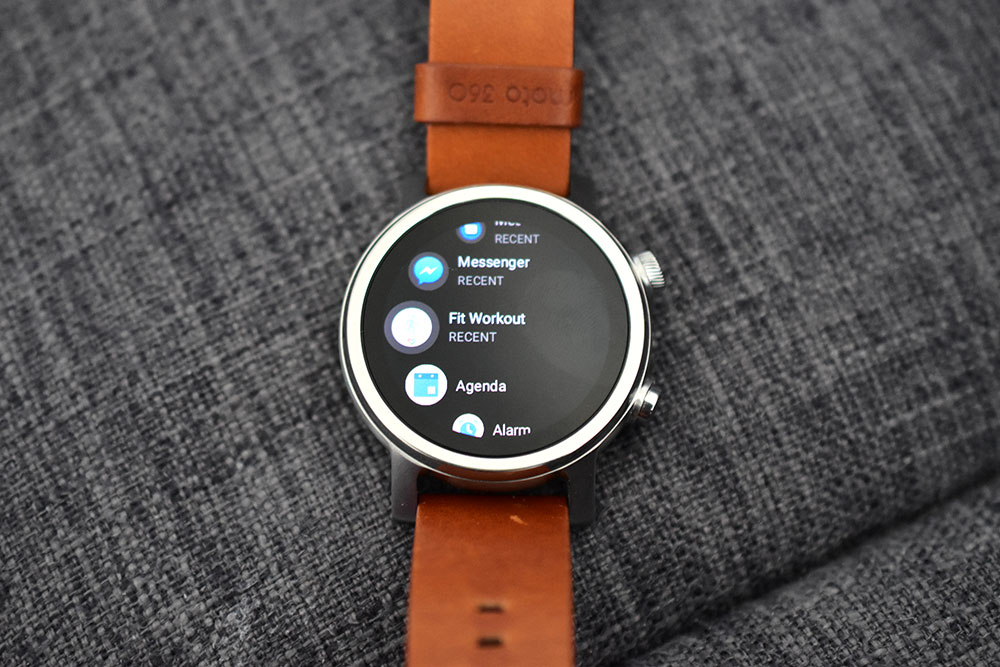
Coming in at 1.2″, the 390×390 AMOLED display is bright with saturated colors. It’s not as pixel-dense or vibrant as its other competitors, but it gets the job done. The black border around the screen is thick and noticeable. Had they taken advantage of this real-estate and made the face even larger, that would’ve added significantly to its appeal. I’m sure there must be some sort of technical challenge preventing that.
Fitness & Tracking
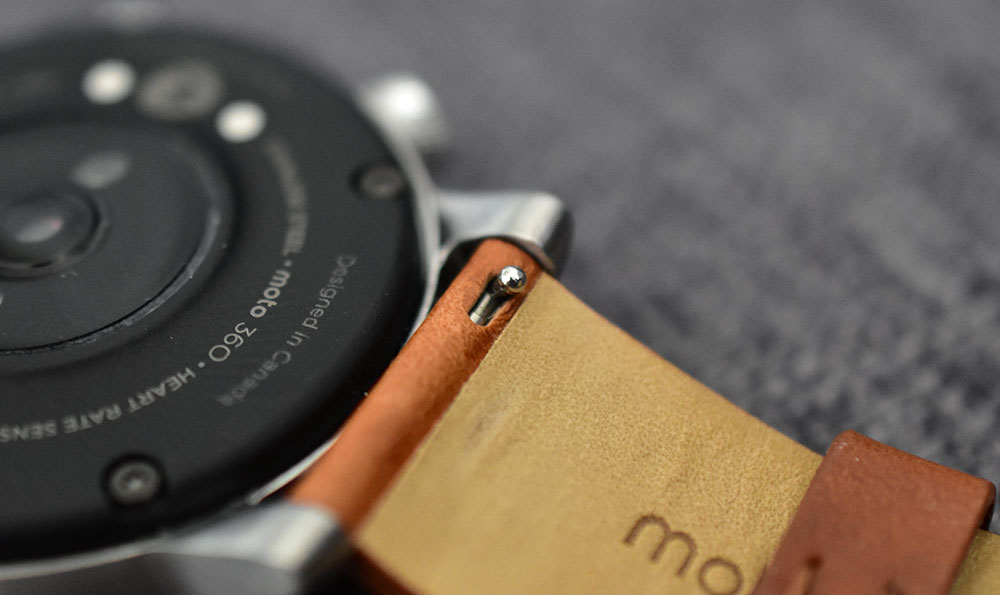
The Moto 360 comes with all the basic steps tracking and heart-rate monitor you’d expect. You won’t find advanced sensors here, and that’s okay for me. Because the company didn’t pitch this as an advanced athlete-performance inspired device.
The sensors are accurate and gave a consistent reading on my workout performance. While it’s not replacing my phone, the GPS on the Moto 360 was surprisingly accurate and proved more reliable than I’d thought. There were times where I didn’t want to bring my phone with me along for a jog and depended on the watch for guidance – it didn’t disappoint.
Battery & Charging
The 355mAh battery performed well under regular daily usage. It was able to last about 10 hours worth of use managing to still have about 30 – 35% juice left before needing to recharge at the end of my workday. Now when I attempt to use it as a regular watch (turned off al notifications and enabled only the clock dial) the battery lasts much longer.
One major gripe I have with this watch is the charging station. Everything about the watch was well designed, engineered, and thought out…except the charging bay. It’s ugly, doesn’t stay in place, and it’s hard to find a place for it on any desk. It just seemed like this was an afterthought. I was also disappointed it didn’t have wireless charging. That would’ve solved this problem completely and I could’ve just stowed the charger away.
This also made charging at the office or on-the-go impossible since carrying that bulky charger around was out of the question.
One thing I do love about this watch is when the battery dies, it still manages to save a little bit of juice to keep the watch dial on. So even when the battery is empty, you can still use it to tell time. It’s impressive how long the “always-on” watch dial actually stays on. I don’t think I’ve seen it powered off during the entire week of testing.
The buttons
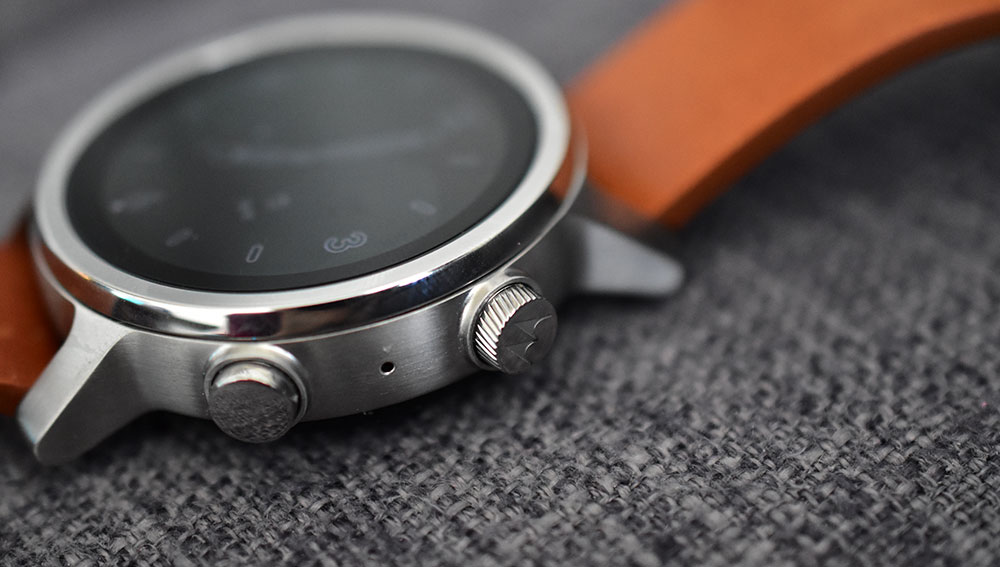
This is a level of detail that often gets overlooked – the buttons. Most of the design emphasis on smartwatches are on the display, the bezel, and often very little thought goes into the buttons. The engineers who worked on Moto 360 3rd generation thought otherwise. The tactile feel of clicking and the smooth dialing on these buttons are some of the best I’d ever experience on a smartwatch. It’s expected of a mechanical watch to have well-tuned buttons, but not for a smartwatch, which added to my surprise.
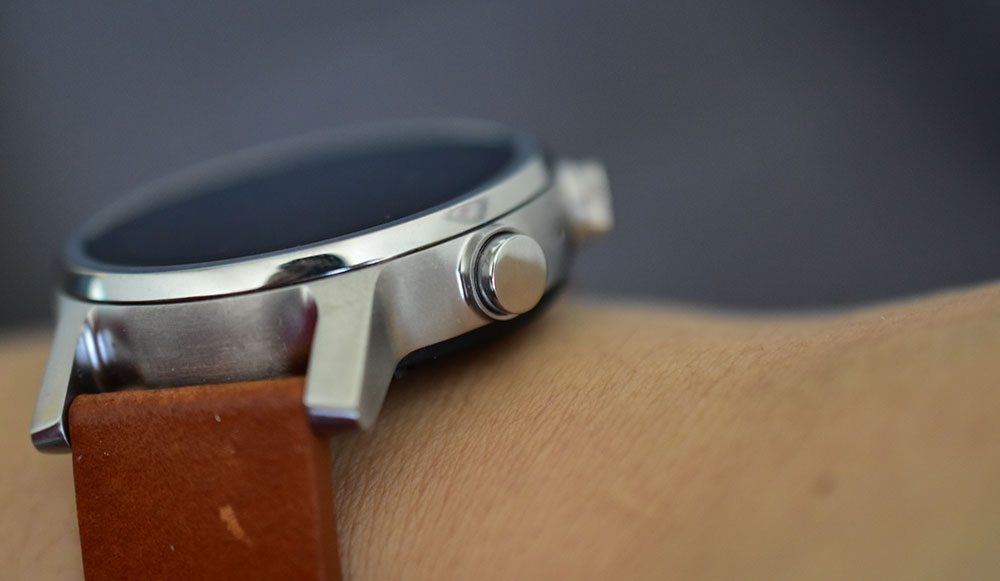
Everything about them screams luxury. The buttons have just the right amount of spring and travel to provide feedback when pressed. And the dialing feels smooth yet accurate. I was able to navigate through apps and settings easily without over-scrolling too often.
Final Verdict
Overall, the Moto 360 is a great value at $299. It’s everything you’d want out of a smartwatch and a little more. The design is tasteful but not over-the-top. It’s versatile and acceptable in just about any occasion. I can wear this on a jog or with a suit. That kind of flexibility is hard to find, especially in the vastly growing competitive smartwatch market.
You may like
Lifestyle
Digital Nomads Flock To These 10 Amazing Tax-Free Cities
Published
2 months agoon
February 4, 2025
The rise of remote work has paved the way for many to gain freedom to live and work from anywhere in the world. But for many work-from-home advocates, the right destination can also mean gaining financial benefits aside from having their dream lifestyle. This is where tax-free cities for digital nomads come in. Maximize your earnings, reduce business expenses, and enjoy a high-quality lifestyle when you relocate to the ten best tax-free cities:
The Benefits of Living in a Tax-Free City
If you are a digital nomad looking for a change of scenery, you’ll get the following benefits when you move to these destinations:
- Tax Savings: For entrepreneurs and remote workers, you’ll save on taxes when you move to any of the cities included in this list. Without paying income taxes, you can keep more of your earnings.
- Business-Friendly Incentives: Many tax-free cities offer favorable corporate policies, residency programs, and economic incentives. Not only will you have the opportunity to work in a setting that suits your lifestyle, but you’ll also reap financial benefits.
- Improved Financial Freedom: Lower tax burdens offer greater financial flexibility. This enables you to enjoy a higher standard of living, travel for leisure, and invest in your future without excessive government deductions.
Top 10 Amazing Tax-Free Cities for Digital Nomads
1. Dubai, UAE
Photo Credit: Aleksandar Pasaric on Pexels
Emerging as one of the most attractive destinations for digital nomads, Dubai has a zero personal income tax policy and a thriving business environment. As part of the United Arab Emirates, Dubai offers a state-of-the-art infrastructure, fast internet, and a well-connected global hub with flights to the world’s major cities. The city’s Virtual Working Program grants digital nomads a one-year residency visa that lets them live in Dubai while working for an overseas company.
2. Bermuda
Famous for its stunning beaches with crystal-clear waters, the British Territory of Bermuda makes working remotely even better as it doesn’t impose income taxes. Its digital nomad visa has no income requirement but will ask to see your financial status. This is to prove that you can support yourself on the island without having a job there. It also allows foreign workers to live and work for up to one year. The abundance of outdoor activities, reliable internet, and plenty of co-working spaces provide an excellent balance of work and play.
3. Croatia
An increasingly popular destination for digital nomads, Croatia is a favorite destination for digital nomads. While it isn’t entirely tax-free, its tax policies and dedicated digital nomad visa exempt you from income tax on foreign-earned income. Remote workers who qualify for this country’s Digital Nomad Residence Permit can enjoy this benefit. In addition, Croatia’s low cost of living allows you to enjoy a Mediterranean lifestyle while working remotely.
4. Antigua and Barbuda
Photo Credit: Julia Volk on Pexels
A beautiful Caribbean nation, Antigua and Barbuda offers zero personal income tax for digital nomads. This twin-island nation has stunning beaches, warm weather, and a welcoming expat community that makes it an ideal place if you’re looking to embrace the island life. It introduced the Nomad Digital Residence (NDR) visa to attract more remote workers. This allows you to live and work for up to two years without paying local income taxes.
5. Panama
Thanks to its territorial tax system, Panama is now a popular destination for digital nomads and entrepreneurs looking to enjoy foreign-earned income that isn’t taxed. Its various visa options include the Short Stay Visa for Remote Workers, which lets you live and work for up to 18 months. It requires proof of employment or self-employment with a minimum income of $36,000. This nation offers modern infrastructure, high-speed internet, and an active expat community.
6. Grenada
Earning the moniker “Spice Isle” of the Caribbean, Grenada offers zero personal income tax for digital nomads. It has business-friendly policies, breath-taking landscapes, and a relaxed lifestyle, ideal for remote workers looking for financial and individual freedom. In lieu of a dedicated digital nomad visa, you can take advantage of its long-stay visa options or explore its Citizenship by Investment Program, which gives you the chance to obtain permanent residency.
7. Montserrat
Another tax-free Caribbean hideaway, Montserrat, is a favorite of many digital nomads thanks to its zero personal income tax. Its lush landscape, volcanic scenery, and friendly local community offer superb work-life balance away from the hustle and bustle of city life. Its digital nomad visa, the Montserrat Remote Work Stamp, lets you live and work in Montserrat for up to 12 months. All you need to do is provide proof of employment with an annual income of at least $70,000.
8. Barbados
Photo Credit: Blue Ox Studio on Pexels
Having positioned itself as a top destination for remote workers, Barbados offers zero personal income tax by introducing its Barbados Welcome Stamp. This visa lets you live and work in Barbados for up to 12 months, making it an excellent option for those looking for financial and lifestyle benefits. To qualify for the Welcome Stamp, you must earn at least $50,000 annually and provide proof of remote employment or self-employment. Its hassle-free application process lets you enjoy the duty-free import of personal belongings and many other benefits.
9. Anguilla
A dream destination for many digital nomads, Anguilla is another tax-free Caribbean paradise. It offers no personal income, capital gains, or corporate tax for individuals. It introduced the Work From Anguilla program to attract more location-independent professionals. This grants them a 12-month remote work visa and access to high-speed internet, modern infrastructure, and a relaxed, safe environment. Its pristine beaches, low population density, and welcoming community make it the perfect place for productivity and leisure.
10. Uruguay
Another South American hub for digital nomads, Uruguay offers a territorial tax system that does not impose a tax on foreign-earned income. In addition to letting you enjoy a stable and high-quality lifestyle, Uruguay provides a five-year tax holiday on foreign income, an appealing offer for long-term stays. Uruguay’s excellent infrastructure, reliable internet, and active expat community let you establish legal residency via the country’s Straightforward Residency Program.

Adopting a cat for the first time can be both an exciting and overwhelming experience. Trust me – I’ve been there.
Just a few months ago, a pastel tabby tortoiseshell (or, as they say, torbie) came knocking on our door. She walked into our patio, setting off the security alarm, and when I came out to look, she meowed at me, seemingly begging for food.
Not having any pets, I rummaged through the pantry and decided a can of sausages would suffice. When I set the plate in front of her, she gobbled the food, bumping her head on my legs as a sign of gratitude between mouthfuls.
After that initial encounter, she visited our home frequently and, eventually, stayed and never left. In short, she decided to adopt us.
Needless to say, I found myself with my first cat, without any preparation ideal for a new pet parent. Luckily, I have family members and friends who are seasoned cat parents, and they were more than happy to guide me through the process.
Knowing what I know now, here’s a simple cat essentials starter kit I would’ve recommended to myself back then and anyone who wants to build a comfortable home for a feline friend.
1. Litter Box and Cat Litter
As a first-time cat parent, one of the things I was nervous about was the smell. After all, I’ve been to cat households before, and let’s just say that not all of them smelled pleasant. In this department, the choice of cat litter and how diligent you are in cleaning the litter box can spell the difference between a fresh, odor-free home and one that announces, “A cat lives here!”
As a rule of thumb, the box should be longer than the cat’s length, with enough space for them to stand, turn, and squat without feeling cramped. It should also be deep enough to hold about 2 to 3 inches of litter.
As for cat litter, there are several options out there, and here are some of the most common ones:
- Bentonite Clay Litter. Made from bentonite clay, this litter forms solid clumps when wet, making it easy to scoop daily. Many prefer this due to strong odor control. However, one drawback is the dust, which could aggravate the condition of cats with respiratory issues.
- Natural/Biodegradable Litter. This eco-friendly option is made from wood, corn, wheat, or recycled paper. Depending on the material, it varies in absorbency and odor control.
- Tofu Litter. This litter is a natural and biodegradable material made from soybean byproducts, usually leftover from tofu production. This is the litter that I buy for my cat. Though it’s not as clumpy as bentonite, I like that it’s dust-free and flushable, making litter cleaning a breeze. It also doesn’t retain nasty smells, as long as I clear it out at least once daily. It also comes in various mild scents, milk being my favorite.
Tip: Place the litter box in a quiet spot where your cat can easily access it.
2. Cat Food
Remember when I fed my cat a can of sausages the first time she came to our patio meowing for food? As it turns out, processed food, especially those that contain a lot of sodium, is a no-no for cats.
Photo by Milda Puga from Pexels
When she started visiting us regularly, I started stocking dry cat food and, later on, wet food.
- Most fur parents recommend keeping cats on an exclusively wet food diet. After all, wet food is high in moisture and low in carbs, which is ideal for cats who are obligate carnivores.
- On the other hand, dry food or kibble can be more affordable and doesn’t spoil quickly. Some also claim that it helps with dental health, though it’s debatable. If you’re offering dry food to your cat, ensure fresh water is accessible, as kibble contains very low moisture.
Though wet food is ideal due to its moisture content, choose the cat food (or a combination of the two) that works well for your cat’s health and fits your budget and lifestyle.
Tip: Look for the AAFCO (Association of American Feed Control Officials) “complete and balanced” statement on the cat food label to ensure your cat gets the nutrition it needs.
3. Food Bowl and Water Bowl or Fountain
An appropriate food and water bowl should also be part of your list of cat essentials, as they can directly impact your pet’s eating and drinking habits. Choose a wide, shallow food bowl – almost like a plate – to avoid whisker fatigue. An elevated bowl or putting the food bowl on top of a stand can also be beneficial as it prevents neck strain.
Most cats aren’t big water drinkers, so it’s essential to make it as appealing to them as possible to avoid dehydration and the risk of kidney and urinary issues. After all, cats hail from desert-dwelling ancestors and prefer running water to prevent contamination.
That said, a water fountain can be a good investment. However, you can also encourage your cat to drink from a bowl by keeping the water fresh at all times and putting it in an area away from the food dish.
4. Comfortable Cat Bed
When my cat started living with us, I was concerned that she might be sick since she slept a lot – as in most of the day. I turned to Google and learned that healthy cats sleep an average of 12 to 16 hours a day. Once I understood this, I stopped worrying and ensured she had a cozy spot to feel safe and rested.
Photo by Cats Coming from Pexels
There are many options for a cat bed, including:
- Enclosed Beds. Ideal for cats who love privacy and curling up in a secure, den-like space.
- Cushion Beds. Soft, padded surfaces provide ultimate comfort for lounging and stretching.
- Heated Beds. Great for senior cats or those who love warmth, mimicking the cozy feeling of sleeping in the sun.
Tip: If your cat ignores a new bed at first, try adding a soft blanket or something with your scent to make it more inviting.
5. Carrier for Vet Visits
A cat carrier is a must-have for every fur parent – no wonder it always comes up in gift guides for pet owners. You’ll need it for vet visits and for transporting your cat for travel or emergencies. Unlike simply carrying your cat in your arms, a proper carrier prevents escapes, minimizes anxiety, and offers a familiar space in unfamiliar situations.
Tip: Leave the carrier out at home so your cat gets used to it.
Other Cat Supplies to Consider
Here are other cat supplies you may want to add to your initial list to make your
- Scratching Posts and Pads. Usually made of cardboard or sisal, these posts and pads give your cat something to scratch instead of damaging your furniture.
- Interactive Toys and Enrichment. Mental stimulation is crucial for cats. That said, wand toys, laser pointers, and puzzle feeders will keep them active and engaged, preventing destructive behaviors.
- Grooming Supplies. A brush appropriate for your cat’s hair length can reduce tangles and prevent hairballs. You can also use pet wipes to clean your cat, especially if they don’t like bathing.
- Cat Tree or Window Perch. Cats love vertical spaces, allowing them to observe their surroundings from a high place. Cat trees and window perches can encourage exercise and offer a place where cats can feel safe and elevated.
Photo by Jakub Zerdzicki from Pexels
With the five essential items above, keeping your pet healthy and comfortable wouldn’t take much. From the simple basics to flashy gadgets and pet tech products, it all depends on your budget, lifestyle, and preferences.
Adopting a cat involves opening your home to a new family member and creating a space where the cat feels welcome, loved, and secure. Beyond food, toys, and a cozy bed, your cat needs patience and understanding to thrive and live its best life.
Lifestyle
10 Adventure Travel Destinations You Don’t Want to Miss
Published
4 months agoon
November 20, 2024By
Kai Kelis
Packing for an adventure travel is the most exciting thing! You’ll find yourself prepping weeks before the scheduled trip. Aside from packing, researching things to pack and what to do before and during the adventure is essential. If you have an upcoming trip to one of these travel destinations, here’s a quick guide to prepare you for the trip of your life!
1. Everest Base Camp Trek in Nepal
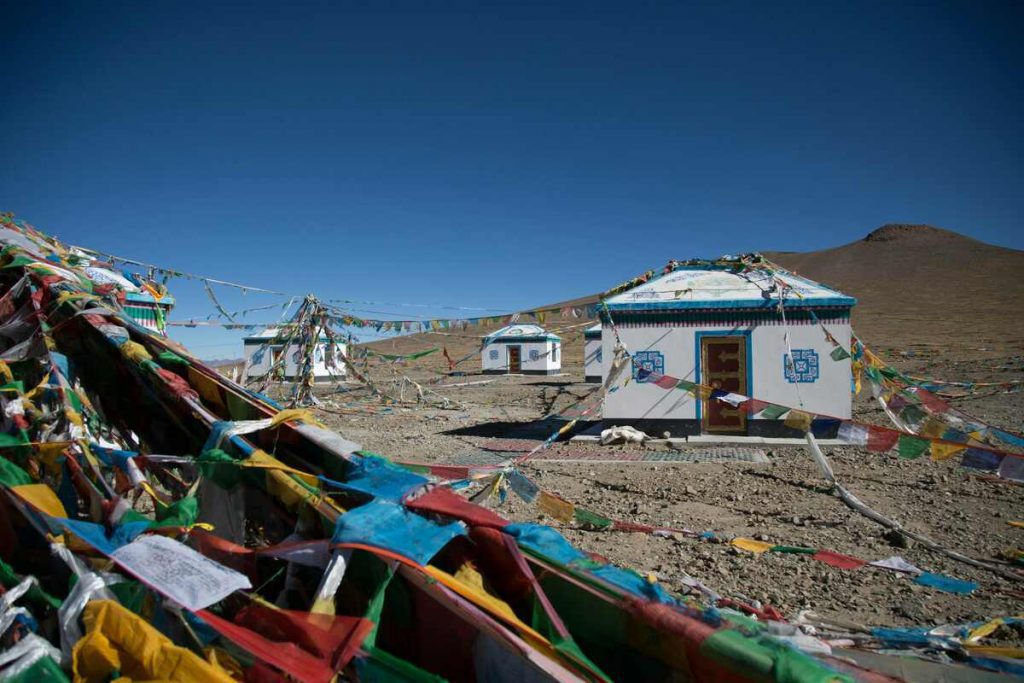
Every mountaineer would probably jump on the first opportunity to trek Everest’s base camp in Nepal. It’s one of the most coveted hiking trips worldwide. The most experienced mountaineers can go all the way up to the summit. The Everest base camp hike is challenging for an average hiker due to altitude. It lasts 12 to 14 days with a total incline of 6015 meters. Although a guide isn’t required, it’s highly recommended. You can also opt for the Guest Houses along the way if you want to sleep comfortably with showers and restaurant facilities.
2. Ice Cave Exploration in Iceland
Iceland is a beautiful country full of greenery and glaciers. The Vatnajokull National Park is Iceland’s most popular place for ice cave explorations. You can either rent a car or ride the bus or mini-bus to get to Iceland’s glaciers. However, renting a car is the easiest way to get around Iceland and enjoy the scenery at your own pace. Make sure you plan a trip from November to March only because the glaciers are melted during summertime. Ice cave explorations are also day trips that don’t require you to spend overnight around the area.
3. Great Barrier Reef Dive in Australia
Australia boasts the most beautiful beaches in the world. It’s also a surf destination if you’re into watersports. However, you can embark on the biggest adventure travel of your life—diving the Great Barrier Reef. The reef extends 2,300 kilometers from north to south and comprises 2,900 individual coral reefs. It also has the largest natural structure, with more than 400 species of coral reefs.
4. Machu Pichu Trail Trek in Peru
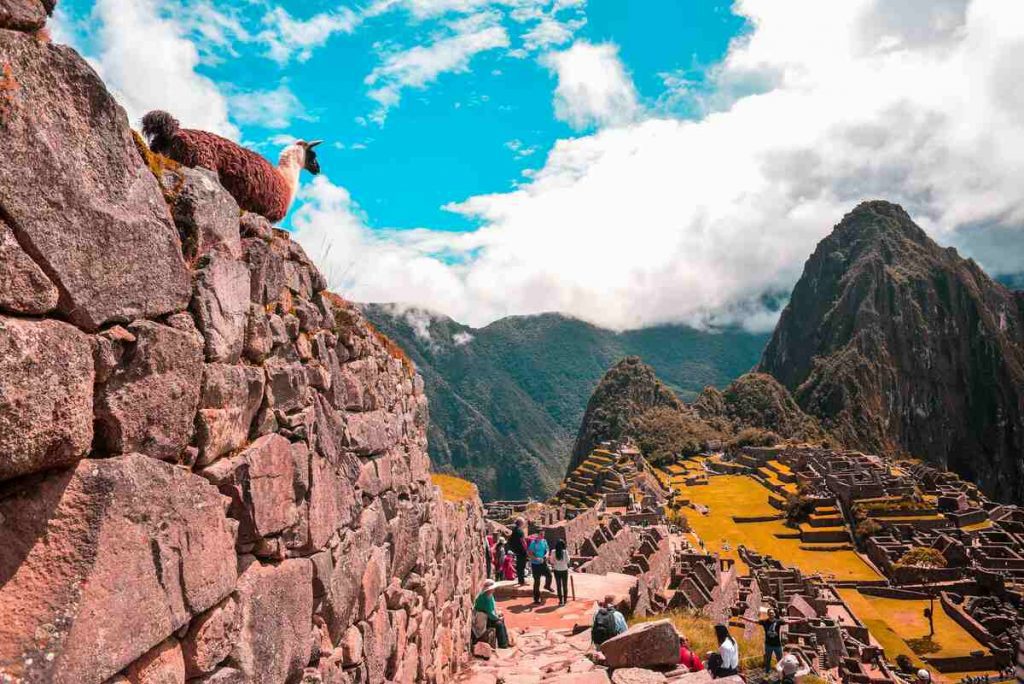
The Machu Pichu Trail is one of the most popular treks in the world. Located in Peru, you can enjoy this UNESCO New World Wonder with an expert guide. The best time to visit Machu Pichu is during the months of June, July, and August. These are the region’s dry months, and hiking Machi Pichu is better during sunny conditions. Accommodations also get booked quickly, so make sure you book in advance. Try to do the iconic four-day Inca Trail!
5. Sandboarding in Morocco
If you’re not cut out for watersports activities like surfing, then try sandboarding in the Sahara. Most visitors go to the two largest dunes in the Moroccan Sahara—the Erg Chebbi or Erg Chigaga. You can do fun activities in the beautiful golden dunes that flow through different slopes toward the horizon, such as camel trekking or camping at the Berber campsite. But one of the most fun activities is sandboarding. You glide down the sand dune with your feet strapped onto the board.
6. Grand Canyon Rafting in America
If you’re from the United States and haven’t been to the Grand Canyon, it’s high time you visited! The Grand Canyon National Park offers many recreational trips, both commercial and non-commercial. You can take guided activities through 15 river concessioners because non-guided “private trips” are sometimes dangerous and not recommended for those newbies. River rafting doesn’t need experts to be enjoyable. It’s doable for every average traveler! Even kids ages 10 to 12 are allowed on motorized rafting trips. The most popular months are May and June since the weather isn’t so hot. However, don’t forget to book a commercial trip in advance for a year or so!
7. Great Walks Hikes in New Zealand
The “Great Walks” is regarded as New Zealand’s multi-day hiking. When embarking on this adventure travel, make sure you pre-book your beds in the backcountry huts along the tracks. During the hiking season, the cost of staying in these huts is crazy. Hiking the Great Walks will immerse you in New Zealand’s pure wilderness. You can also choose which hike you want, as there are multiple options. The Lake Waikeramoana Track is one of the gentlest trails, while the Kepler Track is the most challenging trail of the Great Walks.
8. Hot Air Balloon Ride in Turkey
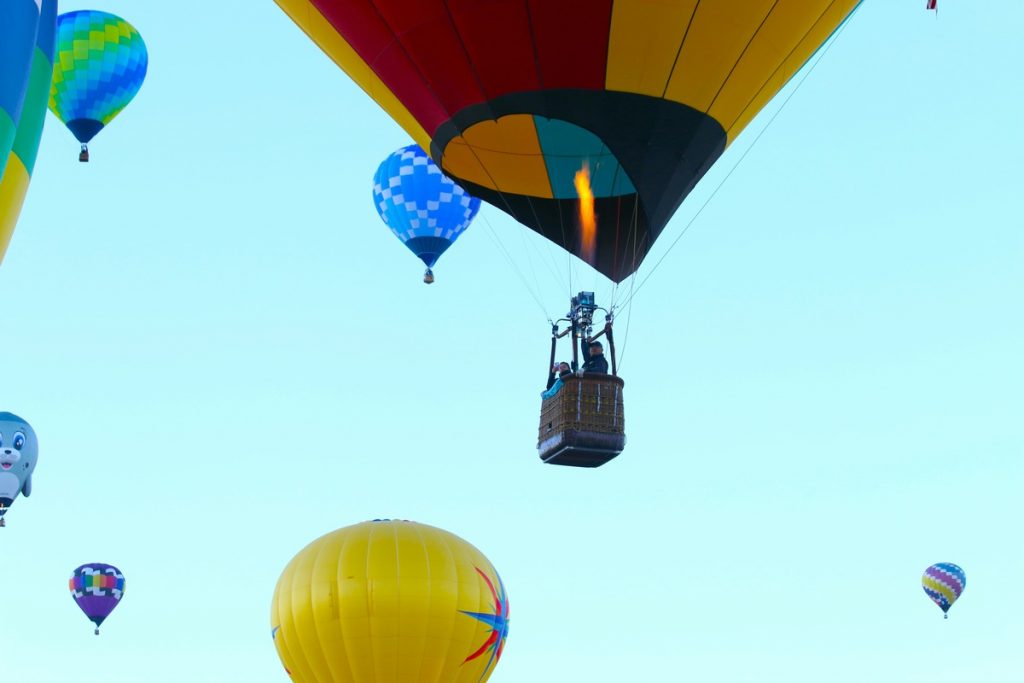
If you want a unique and magical experience, try riding a hot air balloon over Cappadocia in Turkey. This is a one-of-a-kind experience that lets you see Cappadocia just when the first light hits the skyline. The best time to do this activity is during spring and autumn, from April to May and September to October. It offers the best weather for hot air balloon rides.
9. Glacier Hunting and Caving in Greenland
Greenland is the second-largest icefield in the world. It’s also one of the best adventure travel destinations you mustn’t miss. This place offers the best views and beautiful white-ice mountains you’ll never see elsewhere. You can go ice caving and see ancient ice and some interesting frozen formations. Try visiting the Kulusuk ice cave, which was discovered in 2016 and has had fewer than a thousand visitors since. Unlike other ice caves, this one can only be reached once the snow melts during summertime.
10. Jumeirah Beach Skydiving in Dubai
If you want to amp up your adrenaline with an exhilarating adventure, try skydiving over Palm Jumeirah in Dubai Marina. This quick skydive activity will take about 25 minutes from the interview until touchdown. It’s also one of the safest skydive adventures in the world, with certified instructors and various packages for your preference and budget.

Digital Nomads Flock To These 10 Amazing Tax-Free Cities

Adopting a Cat? Here’s Your 5-Item Starter Kit

Discover 2025’s Top 10 Online Banks for Smart Savings

The Latest In The AI Boom: What Entrepreneurs Need To Know In 2025

Taylor Swift’s Fortune: The Billionaire Behind The Eras Tour

8 Popular Mobile Payment Systems

